In the last year, Farer has dedicated themselves to the art of creating chronographs. A most noble pursuit, if you ask me, it started with the release of their automatic chronographs. It was a step into luxury territory for the brand; they boasted refined cases with slim profiles, and an array of dial options that deftly mix a modern eye for color with classic watch design elements. These were followed up with a surprising duo of quartz chronos featuring split-second, flyback movements. A risky bet, but it paid off as the combination of appealing designs and generally cost-prohibitive functionality in an affordable package resonated with enthusiasts.
The Farer Bernina Hand-Wound Chronograph
Today, Farer are releasing the next line in this series of chronographs with a logical follow up ó hand-wound calibers. Of course, these arenít just new movements in old watches; Farer has designed an entirely new case with a barrel shape and external bezel, channeling racing chronos of the ’60s. As is typical with their releases, there are also three distinct watches in the series, each with a different color palette and overall attitude. In keeping with the case, each watch is inspired by speed, and the pursuit of it, in some fashion.
The trio includes the predominantly black dialed, steel-bezeled Moritz, named for St. Moritz, a revered ski resort. Next is the blue, big-eye Cresta, named for the bobsled run created by the RAF in the ’30s. Lastly, there’s the white/cream dialed, ceramic-bezeled Bernina, named for the Bernina Pass, where Farer is sponsoring the 2019 Gran Turismo. Technically there is also a fourth model, which is a sub-edition of the Bernina limited to 20 units. All of the watches are powered by the Swiss-made Sellita SW510 BH hound-wound chronograph caliber, and all are priced at $1,950.
The Farer Moritz
The Farer Cresta
Being the most exotic of the three, and the one that’s least like anything else Iíve ever worn, today Iím taking the Bernina for a Worn & Wound exclusive first spin.
$1950
Farer Bernina Hand-Wound Chronograph: An Exclusive First Review
Case
316L Steel
Movement
Sellita SW510 BH
Dial
Off White
Lume
Yes
Lens
Sapphire
Strap
Leather
Water Resistance
10 ATM
Dimensions
41 x 46mm
Thickness
12.9mm
Lug Width
20mm
Crown
Push-pull
Warranty
Yes
Price
$1950
Case
The great thing about barrel cases is that they allow for a slightly larger diameter while maintaining a shorter, and therefore more wearable, lug-to-lug length. In this instance, the Bernina measures 41 x 46 x 12.5mm, which includes the box sapphire crystal. So itís got the width needed to balance an external bezel with a dial thatís big enough to sport three large sub-dials, yet a length that wonít extend over your wrist. And before you start complaining that itís too big, remember that Speedmasters and Autavias are both 42mm, so this fits in with that period.
The case itself is pretty straightforward in its overall shape, staying with the barrel concept, but it’s finished and detailed superbly. This is where Farer really shines. Every detail is considered, so the watch as a whole comes out more refined. An example of this can be seen on the right side, where the mid-case ó which has been tuned with undercuts and shifts in finishing to help cut down the visual height ó extends a bit around the pushers. Or how on the case back there is a slightly raised lip where the sapphire display crystal sits, which seems to bring the movement closer to the surface. The finishing also has that higher-end feel, where the brushing has an almost pearlescent quality, and every edge is perfectly crisp.
Farer’s signature bronze element
Classic barrel geometry
Superb finishing
For Farerís signature bronze crown, they repeated what they did on their manually-wound three-hand models (like the Stanhope we previously reviewed). Instead of solid bronze, they went with steel with a bronze cap ó the logic here being that given the daily winding needs of the watch, steel is better suited for the task. Itís a good fix, as youíll still get the patina effect on the outer side, but it’s a more classic look otherwise.
Dial and Bezel
The case on the Bernina is as nice as one could hope, but the dial and bezel are where it gets its personality. Where to even begin? There is a lot going on here, but the first thing one notices is obviously the striking white, cream, red, and blue colorway. While white dials arenít rare, they are less common than dark dials ó especially on sport watches ó and ones with predominantly red indexes and hands are basically unheard of. The result is a unique look that is at once exotic and bold, like some of the rarer Universal GenŤves and Gallets from the 20th century, while also feeling highly technical and instrument-like. Itís very attractive and certifiably different, but it takes a minute to warm up to.
Complex, yet balanced
The main dial surface is actually not stark white, but rather a warm offwhite with a satin sheen. The hours index is printed in a vivid red, as is the minute/chrono seconds index, save the first quarter. Here, rather than red, the index is a nice medium blue. Why? Not sure, but I like it. One thing youíll notice on this watch is that almost everything has a little twist like that section of blue. Like I said, thereís a lot going on.
Looking at the sub-dials, youíll notice that the 30-minute counter at 3:00 and the active seconds at 9:00 feature matte white centers to give them just a touch more visibility, while the 12-hour counter at 6:00 is printed directly on the dial. Of the three, the Bernina is the only model without any indentation for the sub-dials, instead using texture and color to make the sub-dials standout. On the sub-dials, youíll find primarily black indexes, making them pop all the more.
An appealing play between white and off white
The bezel extends the bright dial to the edge of the case
Cool lume placement
The red hands drive the aesthetic home
Surrounding the main dial is a crisp white chapter ring that angles down, creating a visual bridge between the dial and the bezel. On the ring is a telemetry scale printed in red, which adds to the complexity of the dial, but looks balanced with the other elements. One of my favorite details of the dial is initially invisible to the naked eye, resting between the telemetre scale and the minute/seconds index. Here, printed in lume that almost perfectly matches the color of the dial, are wide lines at each hour/interval of five. They take up about two minutes of space each, and in the dark add an unexpected and very cool design element.
For hands, Farer went with an interesting mix. The hour and minute are bold diamond shapes, sort of like an alpha-hand, but a bit different with an almost pilot feel. They are bright red with a generous amount of lume fill. The chrono seconds is a long stick that reaches the very edge of the dial, also in bright red. The sub-dials are all needle hands, with the minute and hour counter in red, and the active seconds in blue. Once again, the unexpected blue is a nice touch.
White ceramic with an engraved and filled tachymeter
The bezel is a definite point of distinction for the Bernina. Rather than a raw steel or anodized aluminum, Farer went with white ceramic with an engraved and color-filled tachymeter scale. The sort of detail Iíd expect to find on a more expensive timepiece, it is eye-catching to say the least. It really feels like they took dial elements and brought them out of their safe zone beneath the sapphire, exposing them to be seen and touched directly. The red tach looks very cool against the white ceramic, while the ďtachymeterĒ text plays off of those occasional blue moments. My one critique here is that due to the change in material, the quality of the white is different than it is on the dial, almost like itís a touch translucent.
Movement
Remember a few years ago when it seemed like if you wanted a modern mechanical chronograph your only choice was a 7750? Now, there seems to be every option under the sun, with even mono-pushers on the rise, and I couldnít be happier about it. With that out of the way, the Bernina is powered by an elaborť grade, hand-wound Sellita 510 BH, which features 27 jewels, hacking seconds, 48 hours of power reserve, and a frequency of 28,800 bph. This version has no date, so no phantom crown position to be concerned with.
Note the raised sapphire
Through the display case back, youíll see the very nicely decorated movement, with a large plate on top featuring Farer decoration and branding. On the left side, youíll find the cam system on full display, while on the right is the escapement. Blued screws and perlage complete the picture.
There are a few reasons to want a hand-wound chronograph, starting with the experience of winding your watch. It feels good to do, and while technically less convenient, it’s an enjoyable ritual for your favorite timepiece. Next, the movement will be thinner than the automatic version, .9mm in this instance, leading to a slimmer overall watch. Lastly, there’s no rotor to obstruct your view of the movement.
Straps and Wearability
The Bernina came mounted to a dark blue, big-hole rally strap made out of Barenia leather. Farerís straps are always well-made and finished, and this is no exception. The dark blue leather works well with the white and red of the watch, contrasting those colors, but less starkly than black would have. In a move that I can only call ďcheeky,Ē theyíve lined the strap in bright red. Not typically something Iíd go for, but seeing that touch of red from the tail of the strap peek over the top of the watch makes the red of the watch pop just a bit more.
41mm on a 7″ Wrist



 Likes:
Likes: 

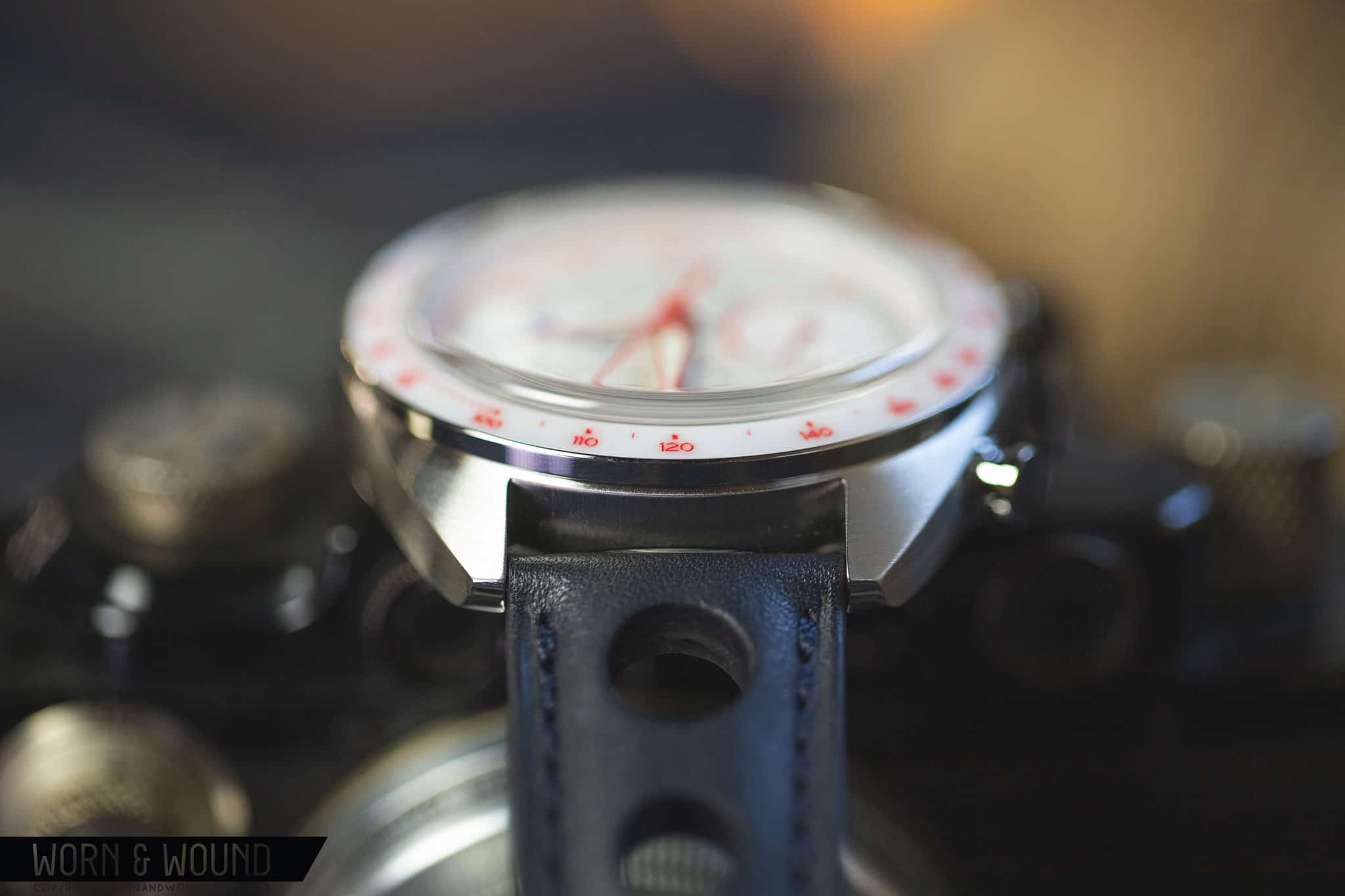
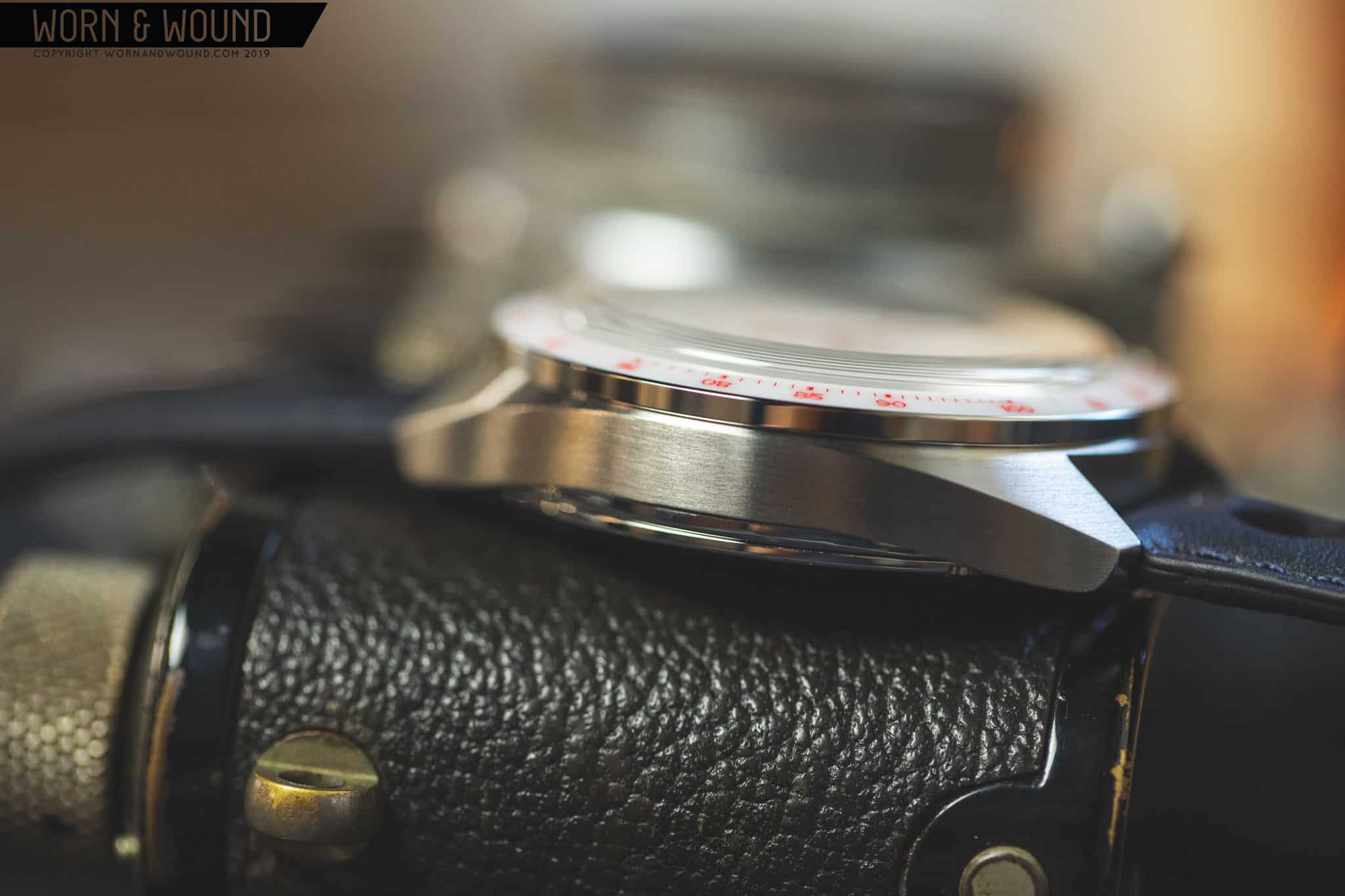
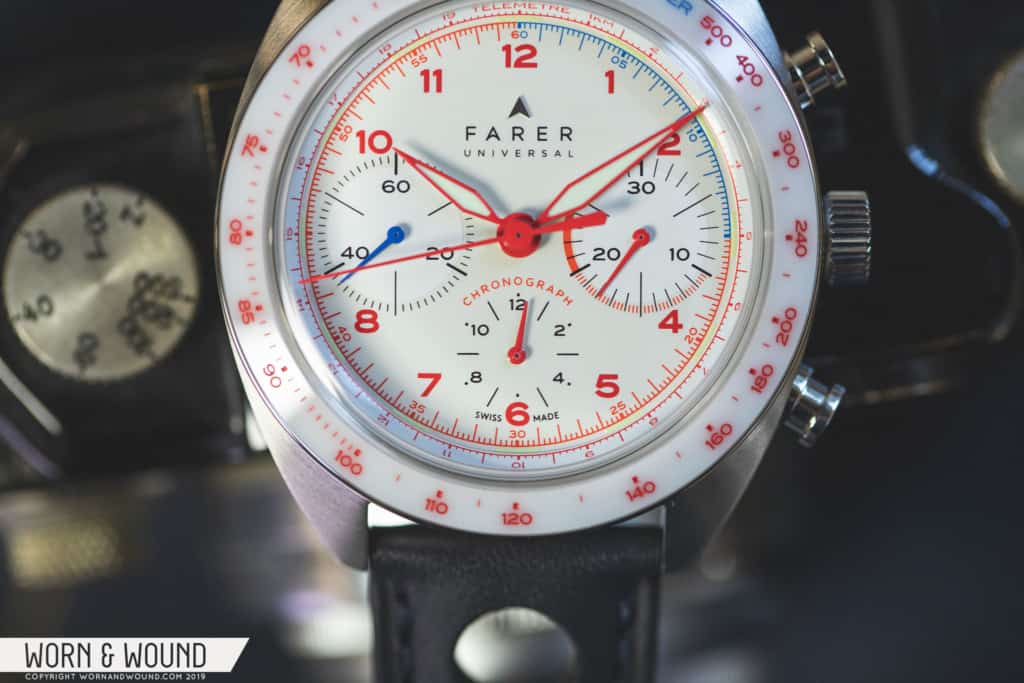
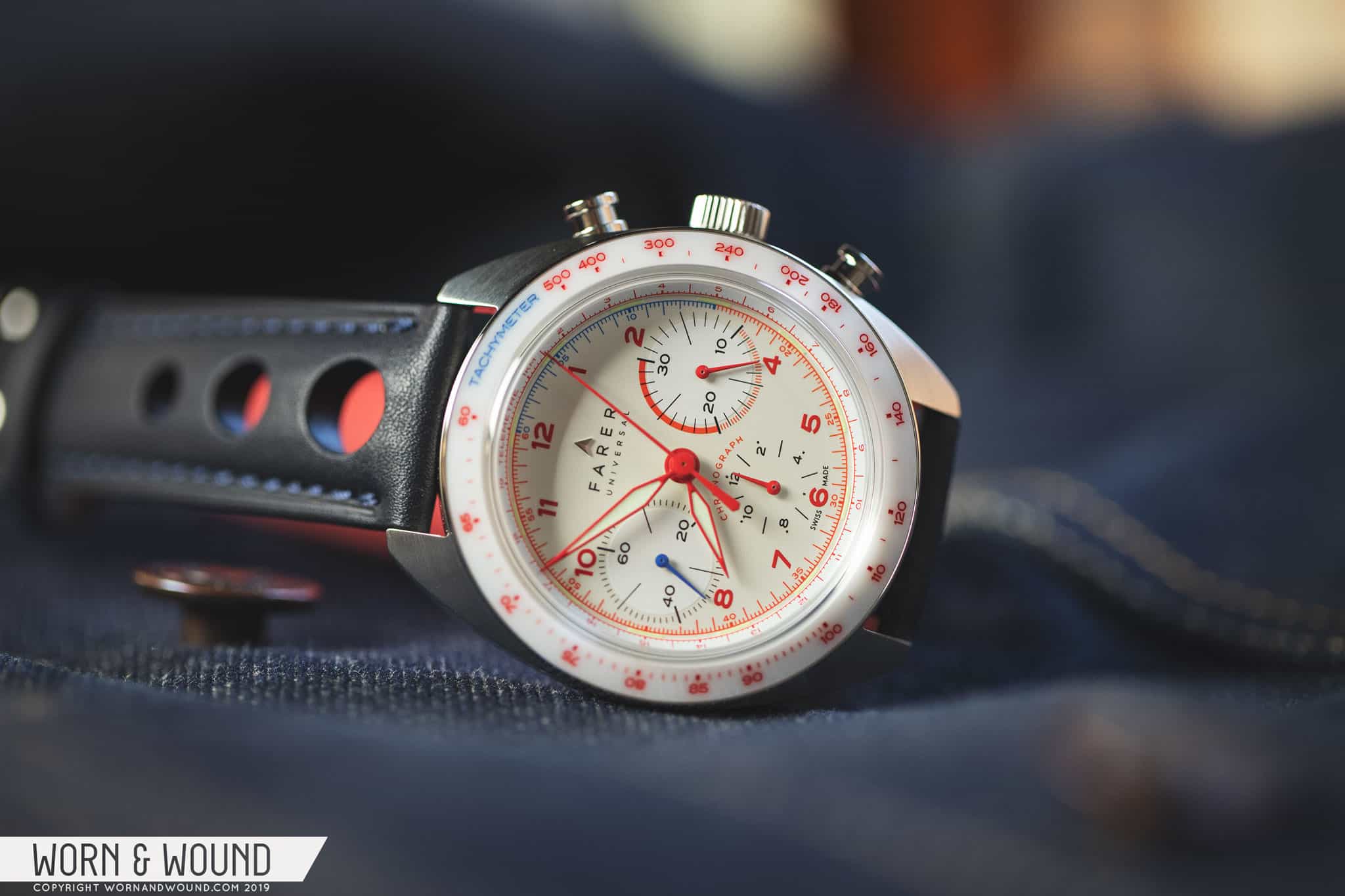
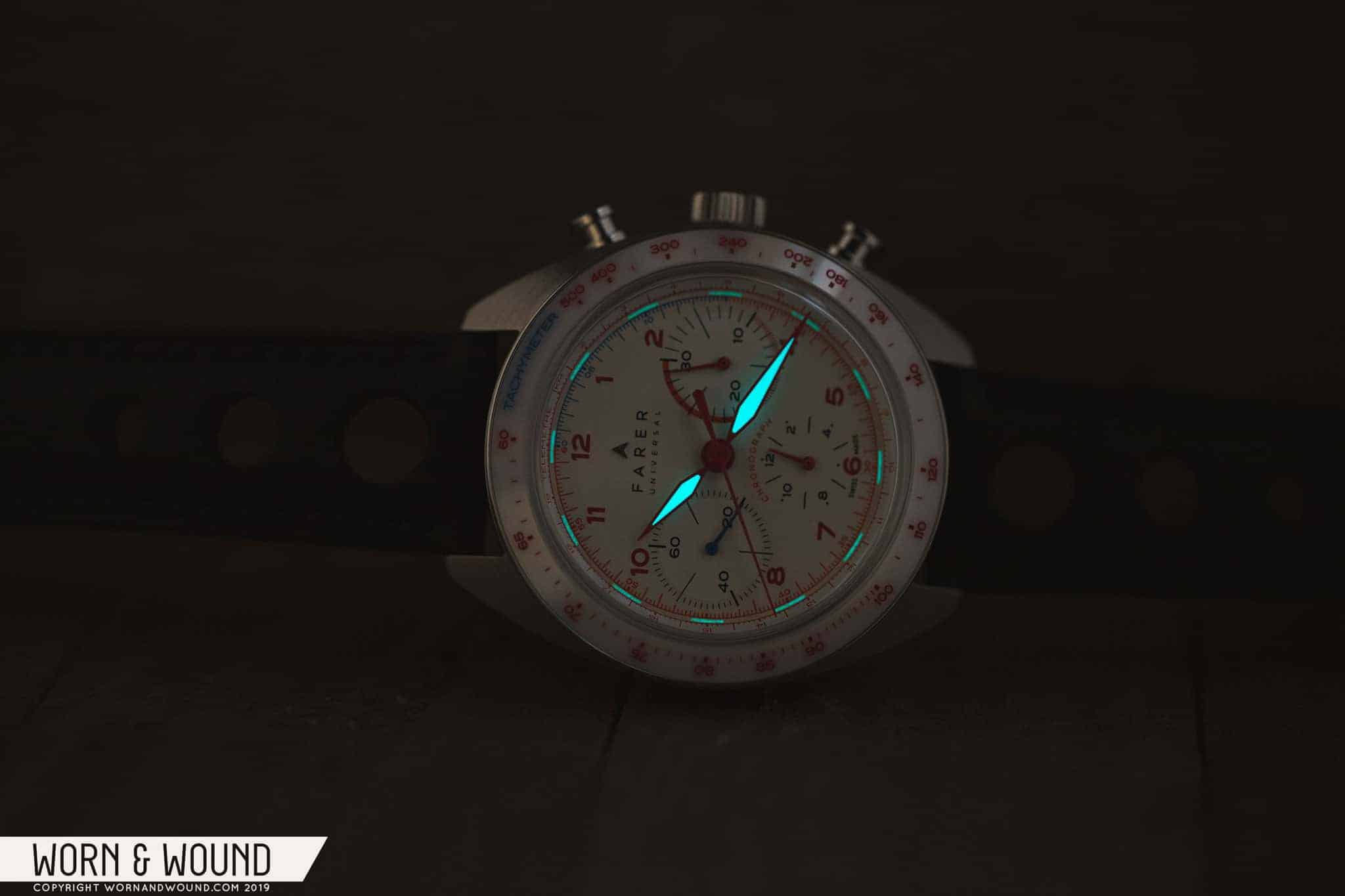
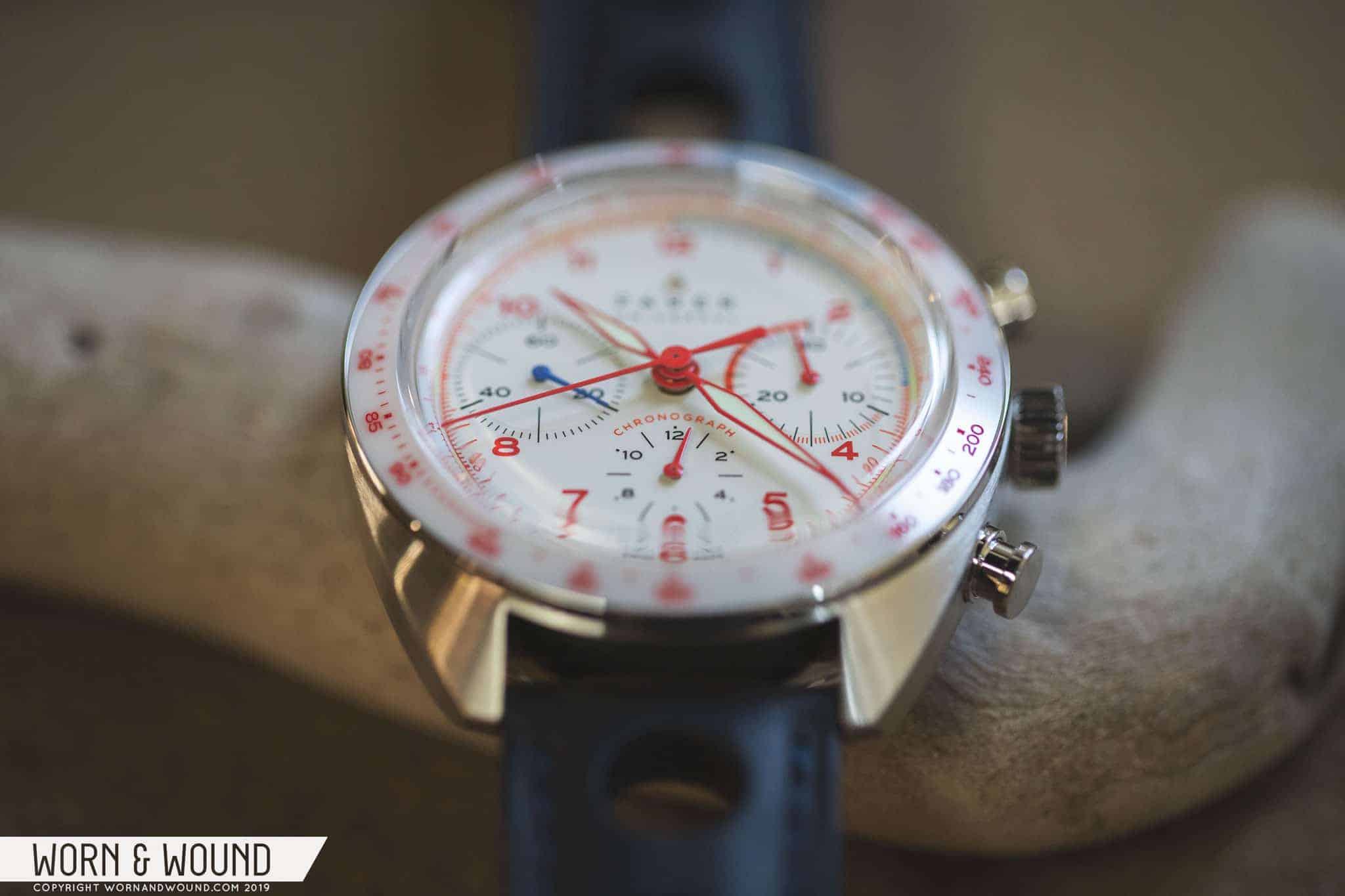
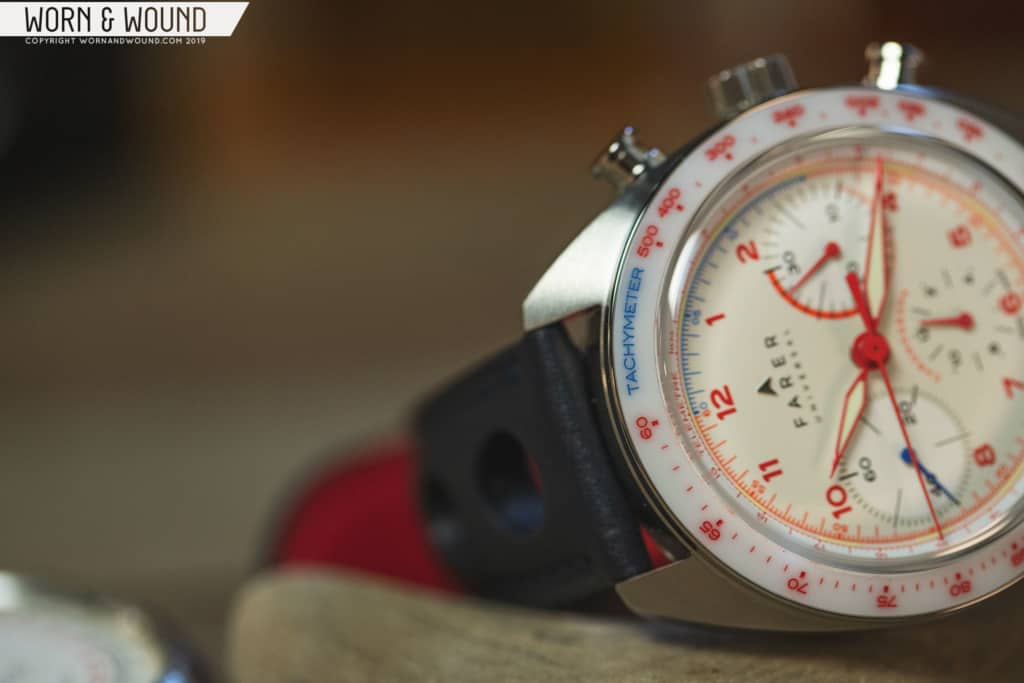

 Reply With Quote
Reply With Quote